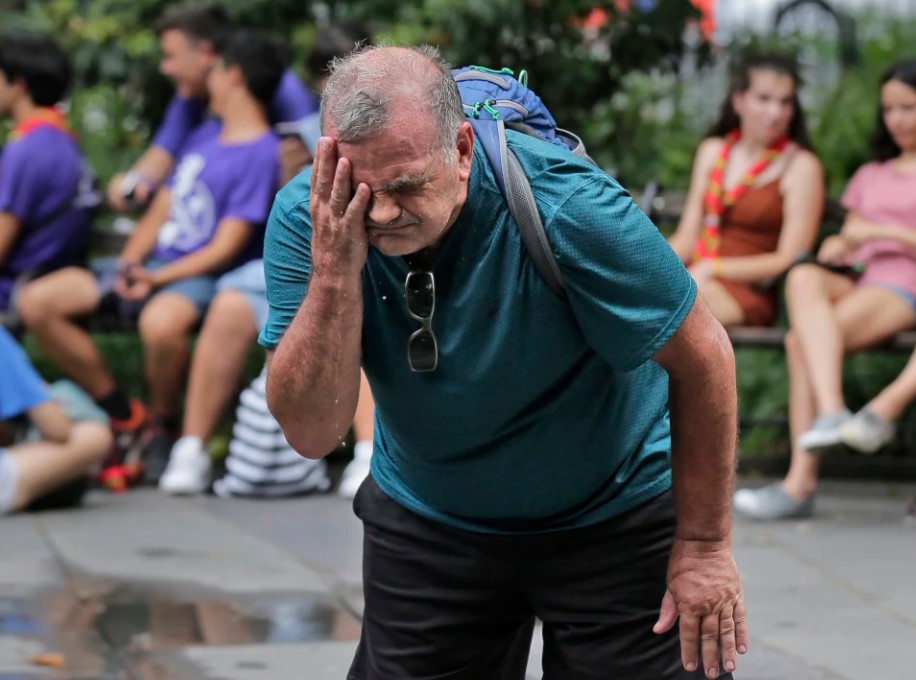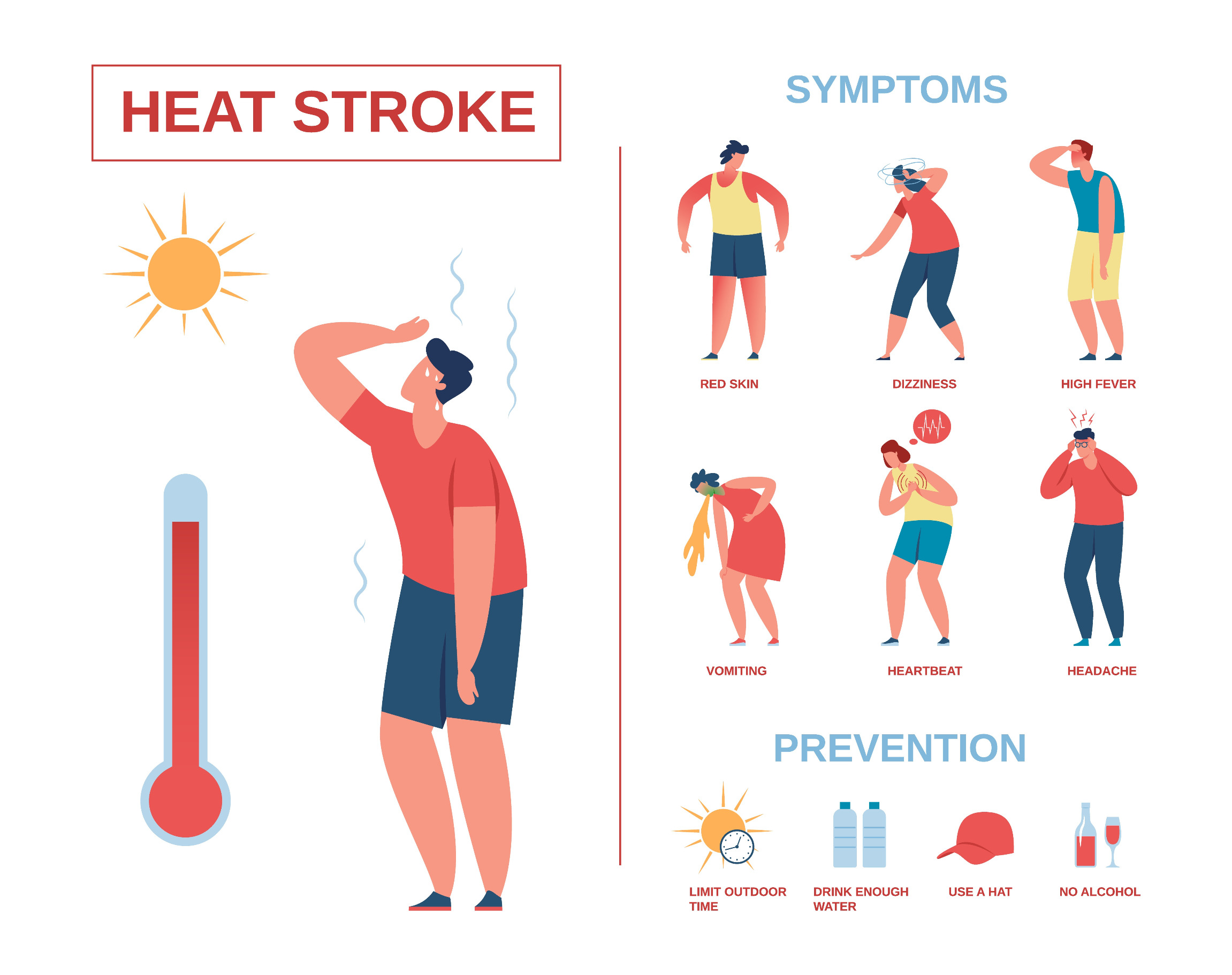HEAT STROKE

Understanding Heat Stroke
Heat stroke is a serious medical condition that occurs when the body’s temperature regulation system fails, causing the body temperature to rise to dangerous levels. This typically happens when someone is exposed to high temperatures for extended periods, especially when combined with high humidity, strenuous physical activity, or dehydration. Heat stroke is a medical emergency that can cause damage to the brain, heart, kidneys, and muscles, and can be fatal if not treated promptly.
Symptoms of Heat Stroke
- High body temperature: A core body temperature of 104°F (40°C) or higher is a key sign of heat stroke.
- Altered mental state or behavior: Confusion, agitation, slurred speech, irritability, delirium, or even seizures and coma.
- Hot, dry skin: Although sweating is common in early stages, skin often becomes hot and dry in heat stroke.
- Nausea and vomiting: The individual may feel sick and may vomit.
- Rapid breathing and heart rate: The heart may beat faster and breathing may become rapid to try and cool the body down.
- Headache: A throbbing headache can be a symptom.
- Flushed skin: The skin may become red as the body temperature rises.

How to Protect Yourself from Heat Stroke
1. Stay Hydrated: Drink plenty of fluids, especially water, even if you don't feel thirsty. Avoid caffeine and alcohol, as they can lead to dehydration.
2. Wear Appropriate Clothing: Opt for lightweight, loose-fitting, and light-colored clothing. A wide-brimmed hat and sunglasses can help protect against direct sunlight.
3. Limit Sun Exposure: Try to stay indoors during the hottest parts of the day, typically between 10 a.m. and 4 p.m. If you must be outdoors, take frequent breaks in the shade or a cool area.
4. Use Sunscreen: Apply a broad-spectrum sunscreen with an SPF of at least 30 to protect your skin from sunburn, which can interfere with the body’s ability to cool itself.
5. Use Fans and Air Conditioning: If you're indoors, use fans or air conditioning to keep cool. If you don't have air conditioning, consider spending time in public places like shopping malls or libraries during extreme heat.
6. Avoid Strenuous Activity: If possible, avoid intense physical activities during peak heat hours. If you must exercise, do so in the cooler parts of the day, like early morning or late evening.
7. Know Your Risks: Certain populations are more at risk for heat stroke, including the elderly, infants and young children, people with chronic illnesses, and those who are overweight. Be extra cautious if you fall into one of these categories or are caring for someone who does.
8. Check on Others: During heat waves, check on friends, family, and neighbors, especially the elderly or those with health conditions, to ensure they are safe and cool.
What to Do in Case of Heat Stroke
If you suspect someone is experiencing heat stroke, it's crucial to act quickly:
- Call emergency services immediately.
- Move the person to a cooler place, out of direct sunlight.
- Remove excess clothing and try to cool them down using any means available, such as applying cool water to the skin, using ice packs, or fanning them.
- Do not give the person anything to drink if they are unconscious or showing signs of altered mental state.
Heat stroke is preventable, and being aware of the symptoms and taking proactive measures can help you stay safe during hot weather.

